I have never found a chokecherry tree near me but I have found the Jambul. The fruit of one species reminds one of the puckery chokecherry, sweet and astringent at the same time. From a distance one might mistake the Jambul for a Mango but the leaves are skinnier and terminate in a pair of leaves. There is one in Winter Park just north of Orlando, perhaps a record. I have seen them in West Palm Beach and in Port Charlotte. There is one almost directly across the street there where my foraging classes meet. We had a chance to taste the fruit this weekend which is more pleasing to the eye than the palate but can be prepared in many tasty ways. One species in the genus provides us with a common spice. To read more about the mighty Jambul go here.
A tree that is more common than the Jambul and with a far greater range is the Norfolk Pine. They used to be standard landscaping fare and have edible seeds in their pineapple-shaped cones. The Norfolk Island Pine, also Norfolk Pine, are common in warm, humid coastal areas because the species is quite salt tolerant (though there is one down the street from me in the middle of the state.) At one time the greater family included a huge amount of species ranging over much of the earth. Botanists tell us that most of them died out along with the dinosaurs leaving just a few species ranging from South America to Australia. While in its native habitat the Norfolk Pine can reach 150 feet high and 10 feet through in North America it is often a house or office plant popular because it somewhat resembles a stringy Christmas tree.
The Norfolk Pine, which is not actually a pine, is banned in some areas. Heavy frost can cause the tree to drop limbs leaving a naked trunk that also often dies causing work for city crews. The tree is on the state’s invasive species list. There is one where my foraging class meets in Port Charlotte. A heavy rain the night before washed a lot of seed hulls into the parking lot. They closely resemble the Bunya Bunya seeds. Botanically the Norfolk Pine is Araucaria columnaris. (It had a recent name change.) A relative, Araucaria angustifolia also has edible seeds.
An often overlooked but easily found wild edible is the Hairy Cowpea, or Vigna luteola. It has two better-known relatives, the Black Eye Pea and the Mung Bean. One can reliably find Hairy Cowpeas near sunny bodies of fresh or brackish water; stream banks, pond edges, ditches, lakes, bays, coves, inlets and the like. Hairy cowpea’s seeds are edible cooked — not that good of a taste though — and the yellow blossoms are edible raw or cooked. Much better than the seeds. One note about yellow flowers in general: They tend to have a laxative effect. Go easy on them. To read more about the Hairy Cowpea, go here.
I always carry three things while teaching a foraging class: A good, sharp pocket knife in the right pocket, a mushroom knife for mushrooms and toxic plants in the left pocket, and a magnifying glass. Small magnifying glasses used to be called “jeweler’s loupe” because they were made like an eye cup and were attached to an open spring wire that went around the head to hold the magnifying glass in place. This left two hands free to work on jewelry, watches and the like. Those do not fit in pockets well. Swing folding tube magnifying glasses while offering a variety of magnification sizes are difficult to work with in the field. They are so small they don’t let in much light making it difficult to see what you are looking at. I use a sliding magnifying glass designed to look at coins and stamps. They are five to 10 powered, have a large amount of glass to let in a lot of light, and slide closed keeping clean and neat in the pocket. They can be bought in most coin or stamp stores for under $10.
Why would I want a loupe? Usually to sort out species. Consider the difference between Blueberries and Huckleberry. Blueberries can be black and Huckleberries, usually black, can be blue. But on the back of every huckleberry leave are brilliant gold glands that you can see with a loop. Also huckleberries have exactly 10 seeds. The number of blueberry seeds vary. Identifying trees sometimes requires a loop. The easy-to-find difference between a Red Bay and a Swamp Bay is the hair on the stem. It is standing up or lying down? I can think of two cherry trees and one plum that is much easier to identify with a lens. Consider adding one to your foraging equipment and trips.
Upcoming foraging classes:
Sunday, July 31st, Blanchard Park, 10501 Jay Blanchard Trail, Orlando, FL 32817, 9 a.m. Meet next to the tennis courts.
Sunday, Aug. 7th, Florida State College, south campus, 11901 Beach Blvd., Jacksonville, 32246. 9 a.m. We meet in front of building “D.”
Sunday, Aug 14th, Jervey Gantt Recreation Complex, 2390 SE 36th Ave., Ocala, FL, 34471. 9 a.m.
For more information about the foraging classes go here.
All of Green Deane’s videos are available for free on You Tube. They do have ads on them so every time you watch a Green Deane video I get a quarter of one cent. Four views, one cent. Not exactly a large money-maker but it helps pays for the newsletter. If you want to see the videos without ads and some in lightly better quality you can order the DVD set. It is nine DVDs with 15 videos on each. Many people want their own copy of the videos or they have a slow service and its easier to order then to watch them on-line. They make a good gift for that forager you know. Individual videos can also be ordered. You can order them by clicking on the button on the top right of this page or you can go here.
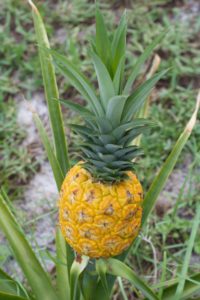
Do you know why this pineapple is yellow? You would if you read the Green Deane Forum. Photo by Green Deane
Want to identify a plant? Perhaps you’re looking for a foraging reference? You might have a UFO, an Unidentified Flowering Object you want identified. On the Green Deane Forum we — including Green Deane and some 8,000 others from around the world — chat about foraging all year. And it’s not just about warm-weather plants or just North American flora. Many nations share common weeds so there’s a lot to talk about, such as the one to the left. There’s also more than weeds. The reference section has information for foraging around the world. There are also articles on food preservation, and forgotten skills from making bows to fermenting food. Recent topics include: Cultivated Apios Americana, What is it? Weed? Stay In One Place Long Enough. Newbie from CT. Mushroom Identification Tips, Another Bolete: Edible? Wood Potato, Chocolate Mushie, Are All Crown Berries Edible? Keeping our cells young, Apple-like fruit on a vine, Square stem and balls of flowers, Is the saw Palmetto supposed to be bitter? Is This A Young Dandelion? Looks Like A Thistle Flower. Mint? Is This A Gopher Apple? and No Flower Too Wrong. You can join the forum by clicking on the button on the upper right hand side of this page.
A foraging afterthought: This newsletter has mentioned Simpson Stopper a few times this year particularly when the shrubs is heavy with fruit in the late spring. However the season can expand beyond that. One place that happens frequently is in hedges. Hedge plants are usually commercially raised and planted at various times of the year. If the conditions are right the Stopper will fruit even if the bush next to it in the same hedge does not. This past week in Port Charlotte the Simpson Stopper was low on fruit but producing enough for a few to taste. On a bike ride today in Seminole County, about 160 miles to the north, several bushes in a hedge were fruiting heavily. Plants don’t always go by the book. To learn more about the Stopper go here.
This is Newsletter 218.
If you would like to donate to Eat The Weeds please click here.

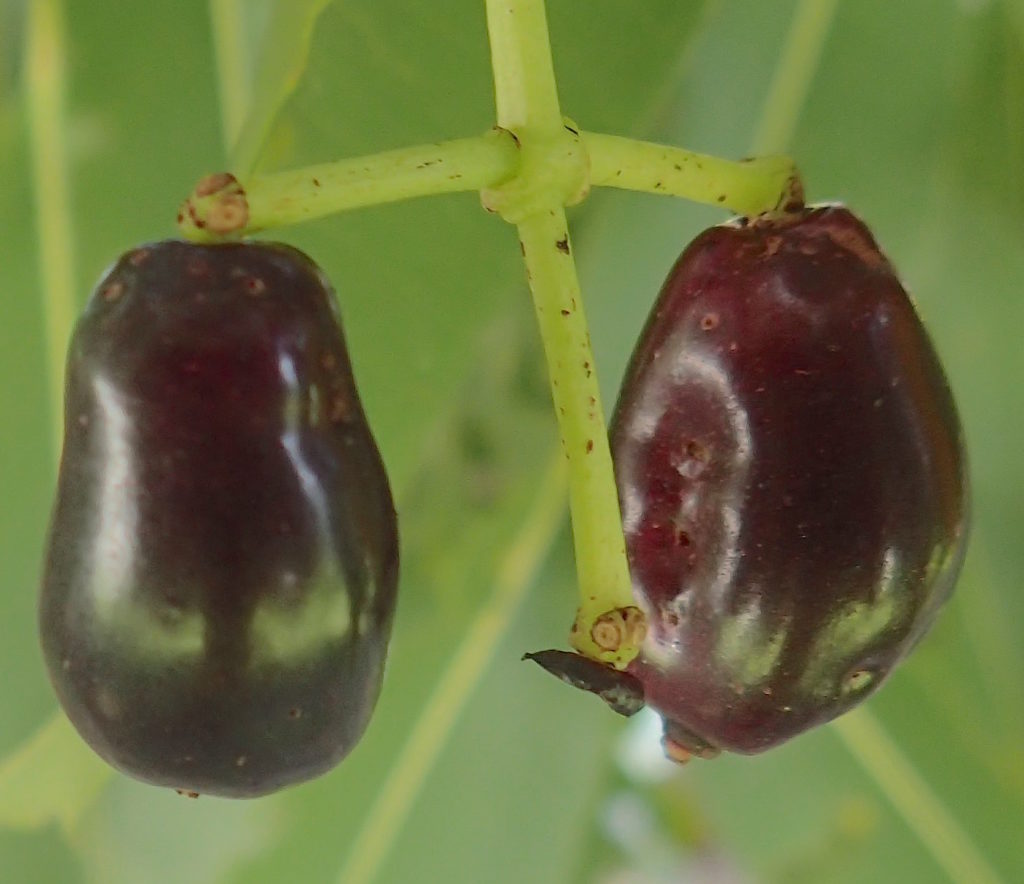
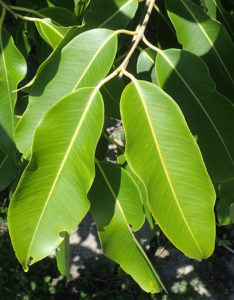
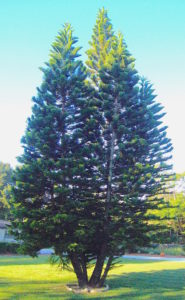
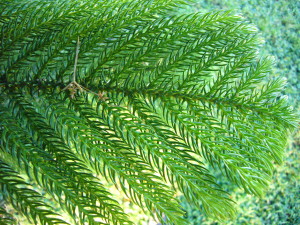
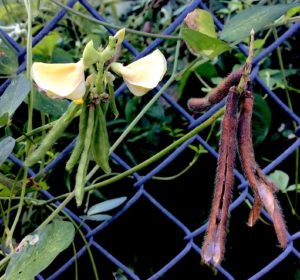
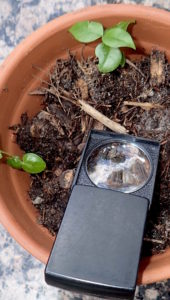
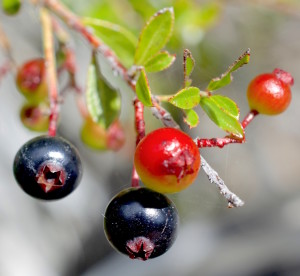


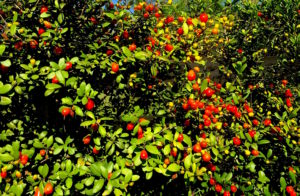

Loupe, not loop. It’s an adaptation from a French word that meant “an imperfect gem.” Nowadays people erroneously use and advertise/market them as a “loop” sometimes but “loupe” is correct. But we could call them whatever and they would still be very useful – I carry one, too.
Yes… thanks… I forgot that… my father’s hobby was repairing watches and so there were many in his work bench.
I like Vigna unguiculata seeds when cooked and spiced , to which tomato pulp is added and sometimes “white Duwaim cheese”. Duwaim is a town south of the capital Khartoum and famous for making best cheese in Sudan. That will compensate for the breakfast meal called “alfool almusri” – vernacular for Faba or Fava beans or Egyptian beans – usually taken by ordinary people of mine. As a matter of fact my love to the plant goes back to my childhood at the primary school when we were shown how to distinguish between mono – and dicots and illustrated by practical examples. Thank God we are nowadays enjoying a good rainy season – an advantage for many crop farmers including those growing Vigna unguiculata particularly those away from the Nile and other rivers.
Hmm… imagining a loupe in a workbench…
A loupe used to be standard equipment for photographers, as well.
No matter! Your site, and your videos, are wonderful. Please keep up the good work!
Yes, with a light table.
The photo, it is a huckleberry?
No. It’s a blueberry (despite the color.)